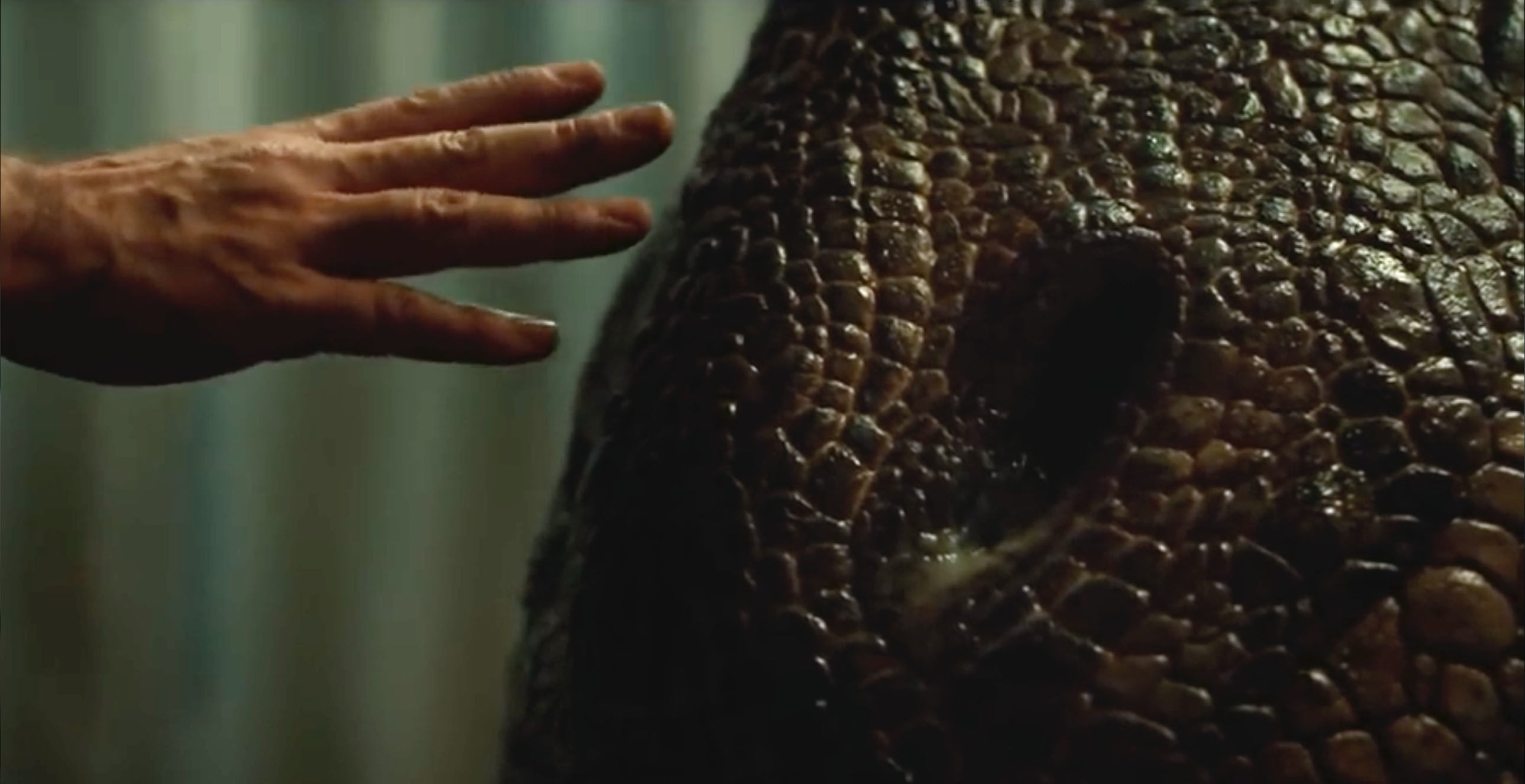Create a free profile to get unlimited access to exclusive videos, sweepstakes, and more!
Newly discovered dinosaur fossil is our best look yet at dino skin in HD

While we haven’t been able to pull a Jurassic Park yet, since resurrecting dinosaurs from the blood sucked by mosquitoes trapped in amber is kind of problematic, paleontologists have discovered a fossil that is one sci-fi movie short of a time machine.
Hi-def tracks left behind by a Minisauripus — the feet of this mini-saurus were only an inch long — have now left a huge footprint on what we think we know about dinosaurs. This isn’t just another dino footprint in fossilized mud. Museums have already been overrun by a stampede of those (and only 1 percent even show any evidence of skin). When it started to rain sometime during the Early Cretaceous, this theropod left tracks that are now the very first to exhibit skin impressions across the entire print.
“This is the first report for any dinosaur of skin traces that cover entire footprints, and every footprint in a trackway,” say a team of paleontologists led by Kyung-Soo Kim of South Korea’s Chinju National University, who recently unearthed these prints in Korea and published their research in Scientific Reports. The prints also have the “highest resolution of detail yet recorded for any dinosaur skin impressions.”
Minisauripus is not actually a species, but an ichnotaxon (a name that categorizes imprint fossils like these prints) of a two-legged dinosaur that is the smallest known therapod and may or may not have been the offspring of something huge. The skin pattern has been found to be similar to the few examples we have of skin imprint traces on the tracks of larger carnivorous theropods.
The skin pattern of the dinosaur is close to a mashup of medium sandpaper and a well-woven fabric, since scales are arranged in perfect arrays. The skin of the animatronic dinosaurs in the Jurassic Park universe is also based on a related creature that isn’t an exact match. Snakeskin was often used as inspiration for that scaly epidermis, which got an upgrade when highlighted with CGI effects in Jurassic World: Fallen Kingdom.
The texture of this dino’s skin is similar to two Lower Cretaceous birds, but this creature is definitely not a bird despite the fact that many dinosaurs were probably feathered. Bird feet have an obviously different morphology.
What was it that preserved the intricate detail on these 120-million-year-old tracks so much more than those of every other prehistoric lizard that have been dug up so far? Embedded in fine grey sandstone layered under black mudstone, these footsteps were frozen in time when the dinosaur took a brisk walk across a thin layer of mud that was both firm and sticky enough to capture the skin texture on the bottom of its feet.
Even more fascinating is that the tiny dinosaur had actually stepped in a raindrop mark, which proves that it had started raining before it took a few strides across the mud.
You have to say that this is almost like bringing back an extinct reptile without the mass destruction.


























